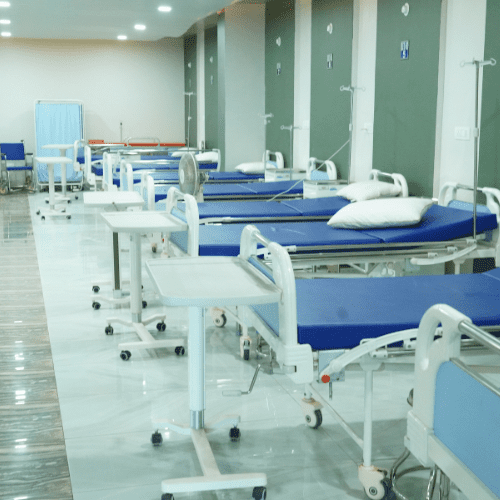The resurgence of interest in traditional medicine, particularly in the context of Ayurveda, Yoga, Unani, Siddha, and Homeopathy (collectively known as AYUSH), has sparked discussions on the need for robust infrastructure to support these practices. As more individuals turn to holistic and natural healing methods, it is essential to create environments that not only facilitate treatment but also foster research and education in traditional medicine. This article explores the necessary components for building effective AYUSH clinics and emphasizes the importance of enhancing infrastructure in the realm of traditional healthcare.
Building Robust AYUSH Clinics: A Blueprint for Success
Building successful AYUSH clinics necessitates a well-rounded approach that includes physical, human, and technological resources. The physical infrastructure must be designed to promote healing, incorporating natural materials and elements such as sunlight and greenery that align with the philosophies of traditional medicine. A welcoming layout with dedicated treatment rooms for various therapies—be it Ayurvedic panchakarma, yoga sessions, or herbal consultations—can significantly enhance the patient experience. Furthermore, it’s essential that clinics are located in accessible areas to encourage community engagement and ease of access for patients seeking alternative treatments.
Human resources play a critical role in the efficiency of AYUSH clinics. Employing qualified practitioners who are well-versed in their respective fields is imperative for authentic treatment. Continuous education and training programs can help maintain high standards of care and ensure that practitioners stay updated with the latest developments in traditional medicine. Additionally, having supportive staff who understand the ethos of AYUSH can create a nurturing environment, allowing patients to feel comfortable and engaged in their healthcare journeys.
Integrating technology into AYUSH clinics can further enhance their effectiveness. Electronic health records (EHR) systems tailored for traditional medicine can streamline patient management and track treatment outcomes effectively. Furthermore, telemedicine can bridge the gap between practitioners and patients, especially in remote areas where access to traditional medicine may be limited. By harnessing technology, AYUSH clinics can not only improve service delivery but also promote awareness and education about traditional healthcare practices among broader populations.
Enhancing Infrastructure: The Future of Traditional Medicine
The future of traditional medicine hinges on the enhancement of infrastructure that supports both clinical practices and research. Investment in facilities that enable research and development in AYUSH can yield significant benefits. By establishing dedicated research centers, practitioners can explore the efficacy and safety of various traditional treatments, thereby strengthening their credibility in the modern healthcare landscape. Collaborations with universities and research institutions can also foster innovation and provide valuable data to substantiate the benefits of traditional healing practices.
In addition to research facilities, enhancing infrastructure must also include the development of specialized training institutes for AYUSH practitioners. These institutes can provide comprehensive education that not only covers the fundamentals of traditional medicine but also includes modules on contemporary healthcare practices and ethics. By equipping future practitioners with a diverse skill set, the AYUSH sector can elevate its standards and ensure that practitioners are not only experts in their fields but also capable of integrating with mainstream healthcare systems.
Lastly, community engagement is a vital component of enhancing infrastructure for AYUSH. Establishing awareness campaigns to educate the public about the benefits of traditional medicine can help demystify these practices and encourage individuals to incorporate them into their wellness routines. Collaborating with local health authorities to promote AYUSH services can create synergies that benefit both traditional and modern medical systems. By building a robust support network, the future of traditional medicine can thrive, ensuring that these ancient practices continue to provide valuable health benefits for generations to come.
In conclusion, the infrastructure for AYUSH clinics is crucial for the successful implementation and growth of traditional medicine practices. By focusing on creating supportive environments, investing in human resources, and embracing technological advancements, the sector can flourish. As we look to the future, enhancing infrastructure through research, education, and community engagement will be key in ensuring that traditional medicine not only survives but thrives in the ever-evolving healthcare landscape. With a strong foundation, AYUSH can continue to offer holistic and effective healing options for individuals seeking alternative pathways to health and wellness.




